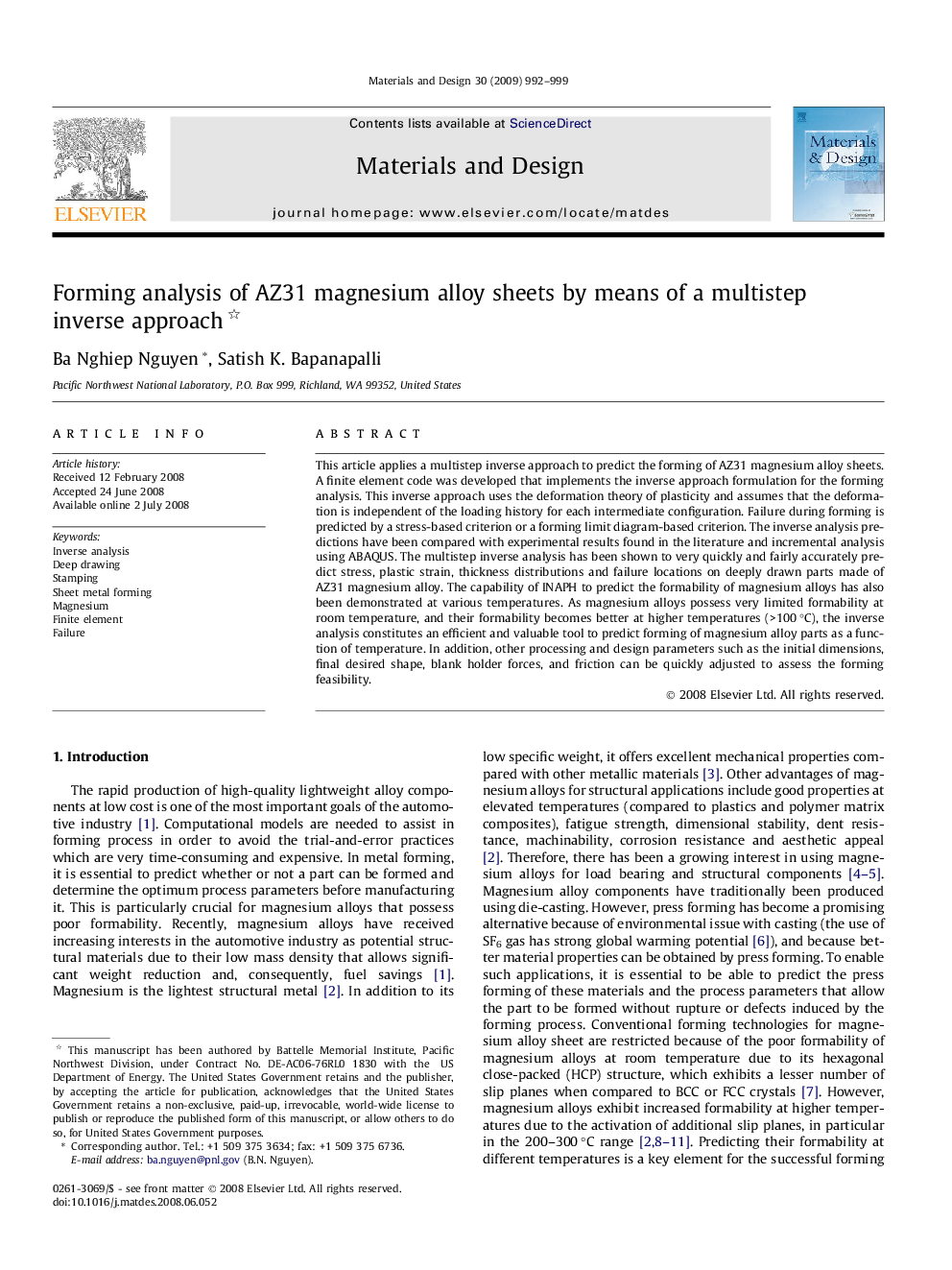| Article ID | Journal | Published Year | Pages | File Type |
|---|---|---|---|---|
| 833006 | Materials & Design (1980-2015) | 2009 | 8 Pages |
This article applies a multistep inverse approach to predict the forming of AZ31 magnesium alloy sheets. A finite element code was developed that implements the inverse approach formulation for the forming analysis. This inverse approach uses the deformation theory of plasticity and assumes that the deformation is independent of the loading history for each intermediate configuration. Failure during forming is predicted by a stress-based criterion or a forming limit diagram-based criterion. The inverse analysis predictions have been compared with experimental results found in the literature and incremental analysis using ABAQUS. The multistep inverse analysis has been shown to very quickly and fairly accurately predict stress, plastic strain, thickness distributions and failure locations on deeply drawn parts made of AZ31 magnesium alloy. The capability of INAPH to predict the formability of magnesium alloys has also been demonstrated at various temperatures. As magnesium alloys possess very limited formability at room temperature, and their formability becomes better at higher temperatures (>100 °C), the inverse analysis constitutes an efficient and valuable tool to predict forming of magnesium alloy parts as a function of temperature. In addition, other processing and design parameters such as the initial dimensions, final desired shape, blank holder forces, and friction can be quickly adjusted to assess the forming feasibility.
